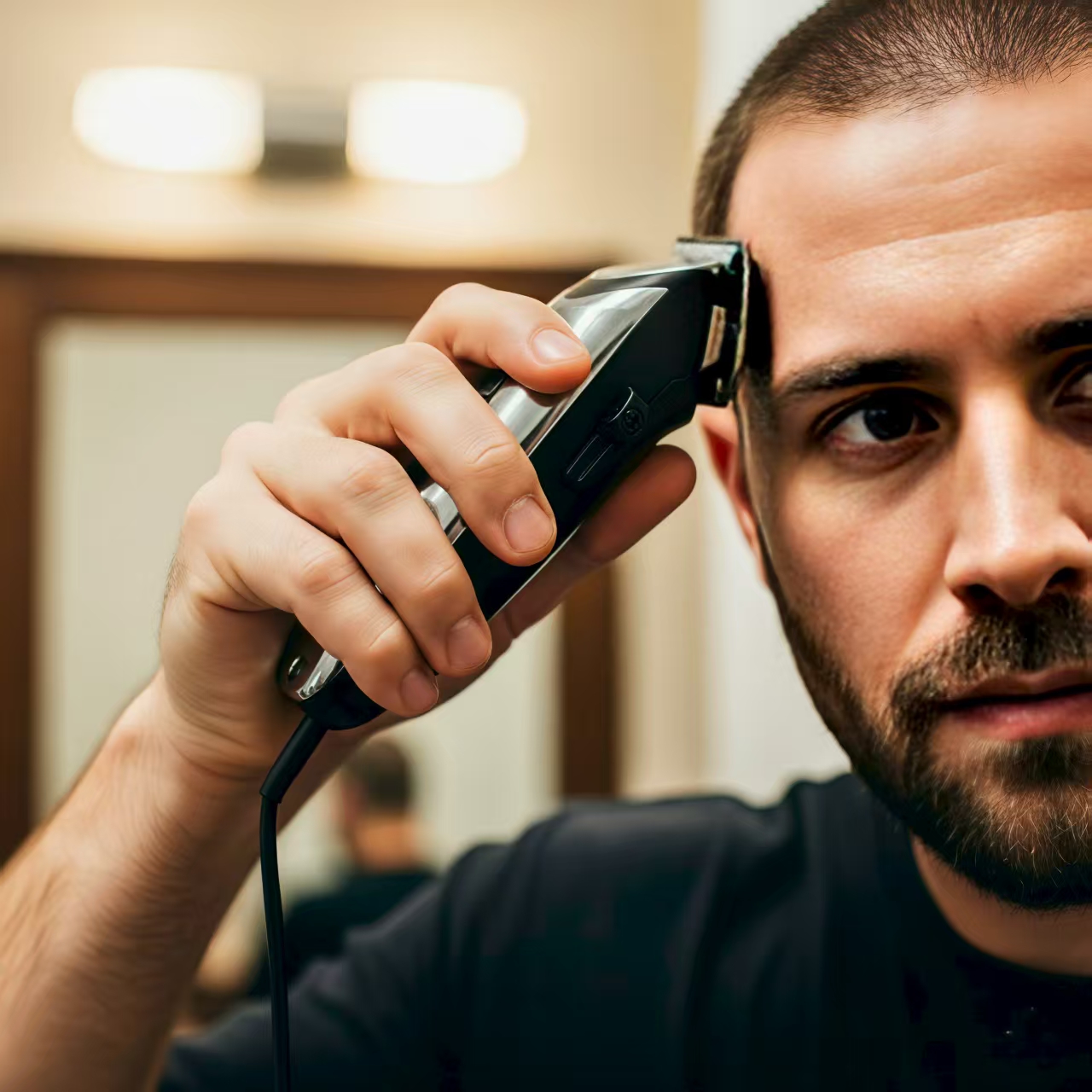- Blog
- Hair Clippers Buzzing Loudly? Here's What to Do
Hair Clippers Buzzing Loudly? Here's What to Do

That familiar, steady hum of your hair clippers is the sound of a good trim in the making. But when that hum escalates into an angry, loud buzz, it's not just annoying—it's a sign that something is wrong. A noisy clipper can mean a less effective cut and could even be a safety hazard. Before you resign yourself to a headache or, worse, a bad haircut, let's break down the common culprits behind a loud clipper and how you can get it back to its quiet, efficient self.
Why the sudden racket?
More often than not, a hair clipper that's suddenly decided to imitate a lawnmower is suffering from a simple, fixable issue. The noise is a cry for help, indicating that parts are vibrating incorrectly, rubbing together with excessive friction, or that the motor is under strain. Here are the most likely reasons your clippers are buzzing so loudly:
- Misaligned Blades: This is the number one cause of a noisy clipper, especially if you've recently removed the blades for cleaning. If the top and bottom blades aren't perfectly parallel, they can rattle against each other.
- Lack of Lubrication: Clipper blades move at an incredible speed. Without proper oiling, the metal-on-metal friction creates excess heat and a whole lot of noise.
- Loose Parts: Over time, the vibrations from the motor can cause screws and other components to loosen. This can lead to a rattling or buzzing sound.
- Trapped Hair and Debris: A buildup of hair clippings and gunk under the blades can strain the motor and cause it to run louder than usual.
- Motor Issues: While less common, a worn-out motor or internal components can certainly cause an increase in noise.
Your Step-by-Step Guide to a Quieter Cut
Ready to silence the buzz? Grab your clipper cleaning kit and follow these steps.
1. The Deep Clean
Before you start adjusting anything, give your clippers a thorough cleaning. Trapped hair is a surprisingly common cause of a loud motor.
- Unplug your clippers. Safety first!
- Remove the blades. Most clippers have a couple of screws holding the blades in place. Carefully unscrew them and brush away any visible hair with a small, stiff brush.
- Get in there. Use the brush to clear out all the hair and debris from the clipper head and the back of the blade assembly. A can of compressed air can also be very effective for this.
2. The All-Important Oil
This is a step many people skip, but it's crucial for the health and quiet operation of your clippers.
- Apply a few drops of clipper oil. With the blades off, apply a drop of oil to the key friction points. Then, reattach the blades, turn the clippers on for a few seconds to distribute the oil, and wipe away any excess with a soft cloth. A good rule of thumb is to oil your clippers after every one to two uses.
3. Blade Alignment: The Key to a Quiet Clipper
If a good cleaning and oiling didn't do the trick, it's time to check the blade alignment.
- Loosen the blade screws slightly. You want them loose enough that you can move the top blade with your fingers, but not so loose that it's floppy.
- Align the blades. Looking at the clippers from the front, the teeth of the top blade should be parallel to the teeth of the bottom blade. The top blade should also be set back slightly from the bottom blade—never flush with or overhanging it.
- Tighten and test. Once you're happy with the alignment, carefully tighten the screws. Turn the clippers on. The buzzing should be significantly reduced.
4. The Power Screw Adjustment (for some models)
Many popular corded clippers, particularly from brands like Wahl, have a power screw on the side. This screw adjusts the power going to the motor and can be a source of loud noise if not tuned correctly.
- Turn it on. With the clippers running, use a screwdriver to turn the power screw clockwise until you hear a loud, clattering noise.
- Tune it down. Now, slowly turn the screw counter-clockwise until the noise stops and the clippers are running smoothly and quietly.
When to Seek a Professional or Consider a Replacement
If you've tried all of the above and your clippers are still rattling your nerves, it might be time for more serious action. A persistent, loud noise could indicate a worn-out motor or a more complex internal issue. At this point, you have two options: take it to a professional for repair or consider investing in a new pair.
If you're in the market for a new set, look for clippers with a rotary motor, which are known for being quieter and more powerful than traditional magnetic motor clippers.
By following these simple maintenance steps, you can not only silence that annoying buzz but also extend the life of your clippers and ensure a better, smoother haircut every time.
